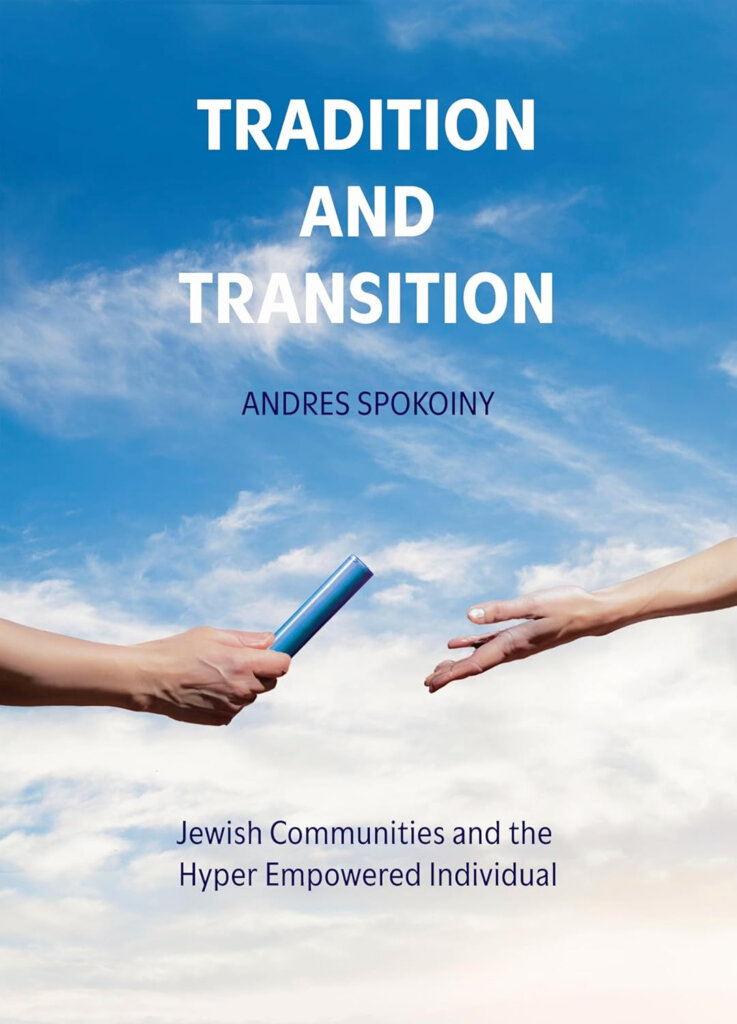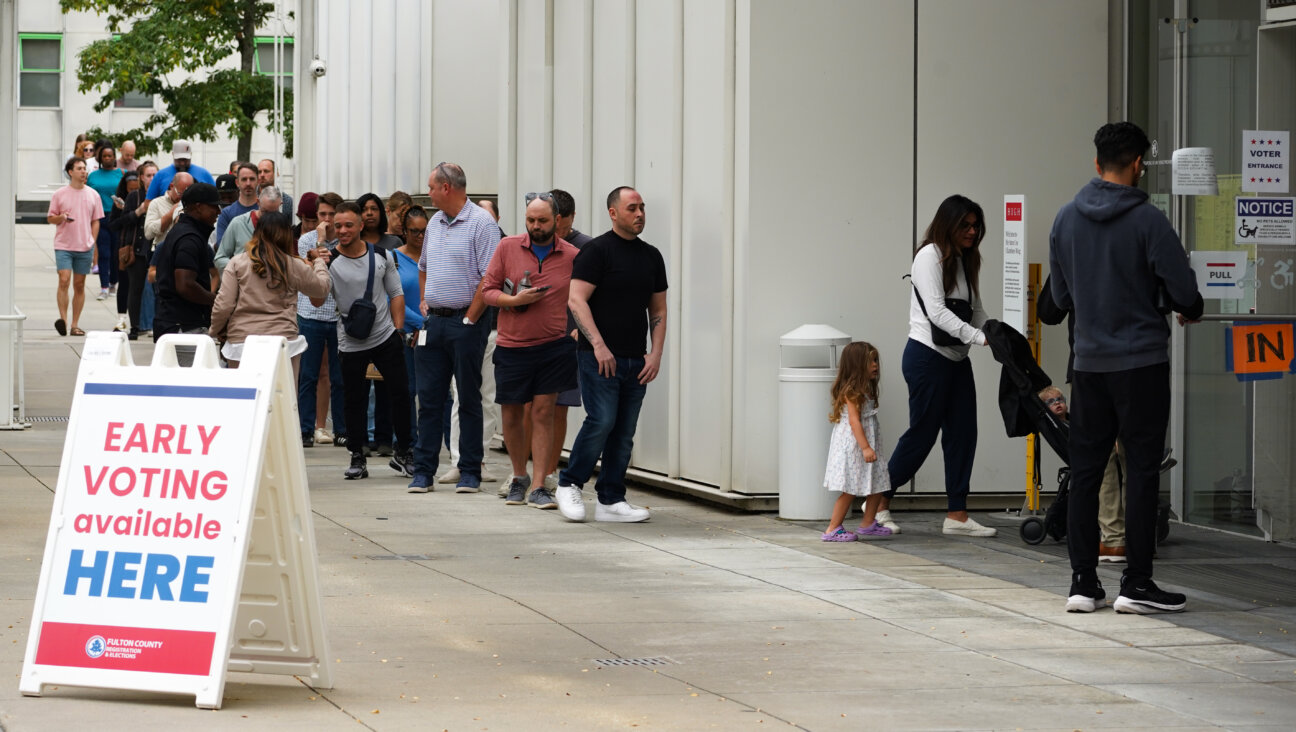Oct. 7 changed Israel. A year later, it must change American Jews, too
What Israel’s tragedy means for the American Jewish future

The crowd at the March For Israel on the National Mall in Washington, D.C. on November 14, 2023. Photo by Matthew Litman for the Forward
If you’re an American Jew right now, the easiest thing to be is afraid.
What’s happening in Israel — including, just this week, a missile strike by Iran, and one of the deadliest terror attacks in years — is terrifying. Social media is an antisemitic cesspool. The Republican candidate for president has made it known that if he loses, it’s the Jews’ fault. On campuses and in progressive spaces, it’s increasingly easy to see that those looking for a villain are, more and more, blaming the Jews.
The communal impulse is to circle the wagons and go all-in on fighting antisemitism. That’s understandable, but is it enough? What if we responded to the enormous challenges we faced this past year not just by obsessing over our survival, but also by finding new ways to ensure that we thrive?
“There’s a window of opportunity for us to think about how we can operate differently and engage people in the long term,” said Andres Spokoiny, CEO of the Jewish Funders Network, a membership group of high net worth philanthropists and foundations. “We can’t just coast.”
I spoke to Spokoiny after reading his new book, Tradition and Transition: Jewish Communities and the Hyper Empowered Individual. Not the sexiest of titles, true, but of all the Jewish books I’ve read since Oct. 7, this one, largely written before the tragedy, speaks most precisely to this unimaginable moment — by looking beyond it.
Spokoiny understands the current fear and the desire to do something about it. A few months after Oct. 7, he asked his staff to tally up all the new and existing organizations devoted to fighting antisemitism. They counted 160.
“I think we’re shell-shocked,” he said, by way of explaining the high number.
Spokoiny, 56, grew up in Argentina, the grandson of immigrants who fled Poland in the 1930s. Seeing a swastika on a Jewish institution, he said, is not exactly world-shattering to him. But in the long, calm run of American Jewish life, such things are more novel and perplexing, he said, “and that’s what drives the conversation.”
The danger is that a conversation devoted solely to countering antisemitism reduces Judaism to a state of perpetual victimhood. It’s an easy way to claim a place in Jewish community, and an easy tie to Jewish identity — you don’t need to learn or practice much about Judaism to fight antisemitism. But it can’t be the sole focus of a thriving community.
“That means, for one thing, when I talk about Oct. 7, I emphasize the acts of heroism,” Spokoiny said, “I emphasize the solidarity of the community, the resilience.”
In the United States, solidarity has taken the form of what Spokoiny and other Jewish professionals have taken to calling “the surge,” a reported increase in Jewish day school enrollment, Jewish Community Center membership and interest in informal Jewish education. The surge may be largely anecdotal, but, Spokoiny said, it is something to build on.
In the long term, he said, American Jews face three concurrent challenges.

American Jewish life evolved at a time when individuals valued community, institutions and shared ideologies. Now individuals are, in his words, “hyper-empowered” to find fulfillment on their own terms. The world presents a Cheesecake Factory-like menu of potential identities and beliefs, not to mention friends, romantic partners and places to live. Anything that limits the individual’s freedom to pick and choose — what Spokoiny calls a “pre-packaged identity” — doesn’t cut it.
“People curate their identities the same way they curate their social media accounts,” he said.
But a world of such radical free choice also creates a crisis of belonging. What does it mean to be part of a people when the idea of boundaries itself is suspect? This poses a challenge to communal organizations, which largely evolved during a more stable time, when clients weren’t able to, say, scroll Shabbat services from around the world to find one they like better than at the synagogue down the block.
Oct. 7 didn’t create these crises. But it did amplify them.
Synagogues and other Jewish institutions found themselves fractured over whether to host discussions with fellow Jews who disagreed with them about Israel, facing the dilemma of defining the exact boundaries of Jewish community.
Spokiny said he comes down on the side of excluding anti-Zionism from normative Jewish life, comparing it to giving a platform to Jews for Jesus.
“I’m not talking about saying you hate Netanyahu,” he said. “But 95% of the Jewish world is Zionist. Half the Jewish people live in Israel. If you don’t set the boundaries, what ends up happening is that your conversation becomes derailed all the time by these extremes that are extremely minoritarian.
“You know, there is a Jewish state. Let’s work on how to make it better.”
But seen differently, the fact that there is even a debate over who belongs inside the Jewish community is a sign that Oct. 7 has increased the urge to belong, if only to join that debate.
“The existential anguish that you see after Oct.7,” said Spokoiny, “makes you look for meaning and belonging.”
The older institutional framework that Jews used to turn to in many ways still works. The aftermath of Oct. 7 proved that. Along with the so-called surge, Jews gave close to $1 billion to the 100-year-old Federation system to support Israel.
Now, Spokoiny said, these institutions can seize this moment of new connection and involvement to transform, in order to better serve a world of people with endless, competing options.
Communal institutions have the best chance of success if they lean into being more transparent and less hierarchical, lowering barriers to entry, engaging Jews in their daily activities, and taking risks. Spokoiny pointed to the blossoming of online Jewish learning opportunities; groups like PJ Library that provide parents with Jewish children’s books; and communal events that take place outside institutional walls — like an “urban Rosh Hashanah festival” held each year in a public square in Buenos Aires for Jews and non-Jews alike — as examples of what works.
The compulsion to belong that Oct. 7 ushered in will eventually pass, and younger Jews won’t stay attached without a clear sense that Jewish life adds value to their individual journey.
The way to deliver that sense, Spokoiny said, involves a renewed emphasis on Jewish education.
“What our community needs as a basic building block is Jewish literacy,” he said. “We can’t build meaningful identities without knowledge. We are likely the most Jewishly ignorant generation in the history of the Jewish people.”
If this sounds like Spokoiny, who trained as a Conservative rabbi before getting a business degree, is urging a return to dogma, he isn’t. The sense of belonging is actually deepened by challenging and wrestling with your faith and community, he said, but first you have to understand it.
“It’s not that we just choose our identity anymore,” Spokoiny said. “We have to build it.”






















